Green architecture – New Monte Rosa Hut
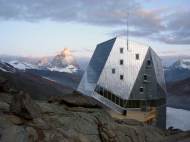 The New Monte Rosa Hut represents one of the best uses of green architectural principles in harsh conditions of Monte Rosa in south Switzerland. The project proves that sustainable construction can be achieved in any setting, since it is nearly self-sufficient while being isolated, and it was built to withstand extreme climatic conditions. New Monte Rosa Hut project was awarded by “Holcim Awards Bronze 2008 Europe” for its solution.
The New Monte Rosa Hut represents one of the best uses of green architectural principles in harsh conditions of Monte Rosa in south Switzerland. The project proves that sustainable construction can be achieved in any setting, since it is nearly self-sufficient while being isolated, and it was built to withstand extreme climatic conditions. New Monte Rosa Hut project was awarded by “Holcim Awards Bronze 2008 Europe” for its solution.
The hut is situated at 2,883 meters (9,458 feet) of Monte Rosa at the place called “Plattje”. Its location offers stunning views of the glacier Gornergrat at one side and twin peaks Castor and Pollux, peak Breithorn, and the majestic Matterhorn (Zermatt) at its other side. This is the starting point for alpinists, the finishing point of the daily excursion which starts from the railway station of Rotenboden in the valley, and interesting destination for people who enjoy heli-skiing. First wooden hut was constructed between 1894 and 1895 and it stands not far away from the new one. Initially it had 25 beds, but after few reconstructions it could host up to 160 people. The New Monte Rosa Hut has a big dining room, 3-8 bed dorms with total capacity for 120 people, as well as all the needed additional serving rooms.
Finished at the end of 2009, the building is the result of joint work between Swiss Alpine Club (SAC), Monte Rosa section of SAC, and master students from ETH Zurich’s Department of Architecture supervised by professor Andrea Deplazes. This is probably the most complex wooden building constructed in Switzerland, and its completion was overdue because of hard conditions on that altitude and bad weather. The overall costs of the construction were around 5.7 million Swiss francs. The future plans include installation of a little meteorological station that will be used to monitor the local weather conditions.
The exterior of the 5-floor building resembles a rock crystal polygonal construction, which came out as the result of extensive wind studies performed in a wind simulation software for architecture. Aluminum plates have been used as a final dressing because of their properties and good resistance to windy conditions, which enable good thermal insulation in thin layers.
New techniques and CAAD/CAM software used for design of the building opened new perspectives in the building energy management. The New Monte Rosa Hut was constructed out of pre-fabricated “lightweight” wooden frames which were delivered to the site by helicopters. This building technique was used to ensure minimal weight of prefabricated frames, as well as for lower material consumption and time needed to build on site. In order to avoid transfer of warmth to the ground beneath the building, the whole building stands on a spider-like steel platform which is connected to the ground by ten steel stilts planted into concrete foundations. Small VELUX windows are used to keep the energy and warmth inside as well as the feeling of safety in a refuge.
New Monte Rosa Hut southern façade is covered with 85 square meters (915 square feet) of solar photovoltaic panels and 35 square meters (376 square feet) of solar thermal (hot water) system ensure up to 90% of the building’s energy needs. The excess energy is stored in batteries, and there is a backup power generator that works on fuel in case of an emergency.
A big cistern that was drilled into a rock is used to store rainwater which is used for flushing toilets and showers. In order to further lessen the usage of water, there is a complex system of micro-filtrates which are cleaning gray water for further reuse. Although the remoteness of the New Monte Rosa Hut requires additional costs for helicopter transport of supplies at least once a month, compared to the old hut, the new building diminishes up to 66% of emission of CO2 per person/day.
At the end, one must mention the fundamental question concerning the existence of a hut in this kind of a surrounding. Is it necessary and what are the consequences left by mountain tourism? Although the answer isn’t simple, this project is one of few examples that confirm that the balance between architecture and habitat can be preserved.

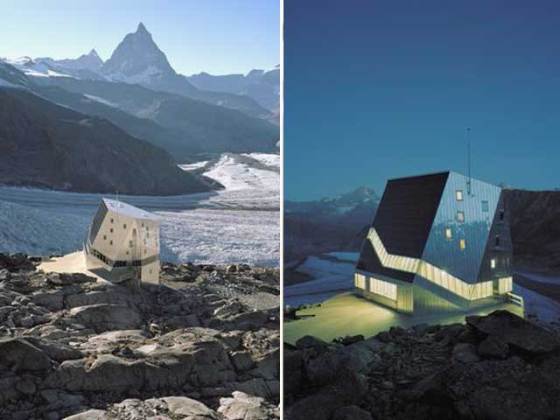
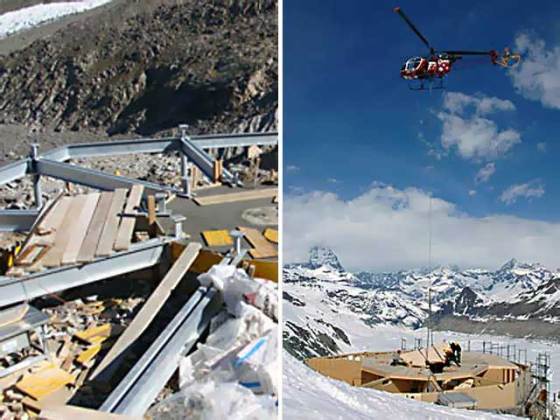
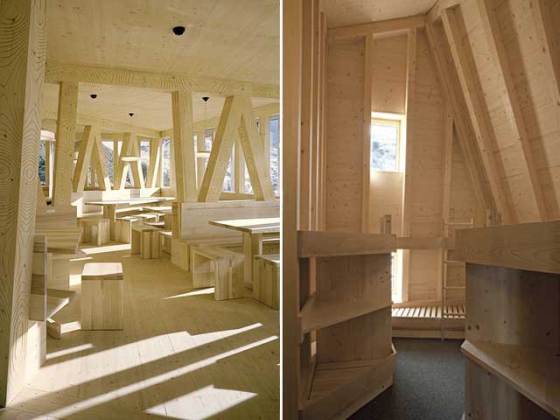
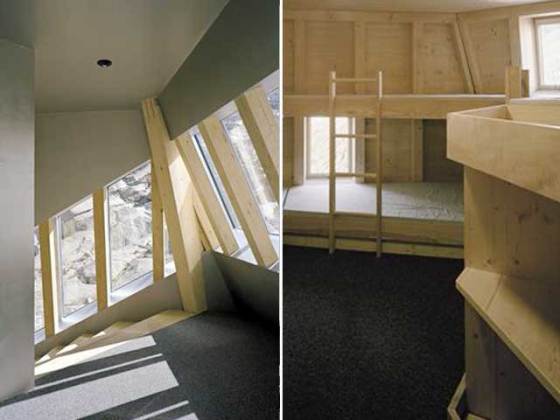








Hello sir/ma
I am a graduate and av work as a store keeper in some construction companys like Vita construction company….I really love to work with you if given the chance to work with your aggressive company sir.
Hope to hear from you soon and having a interview wirh you soon
Your’s Sincerely
Bello